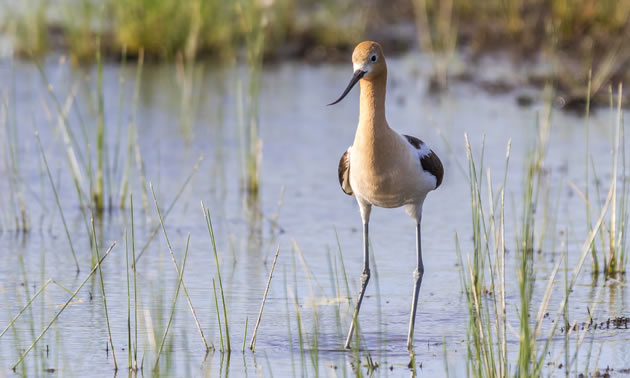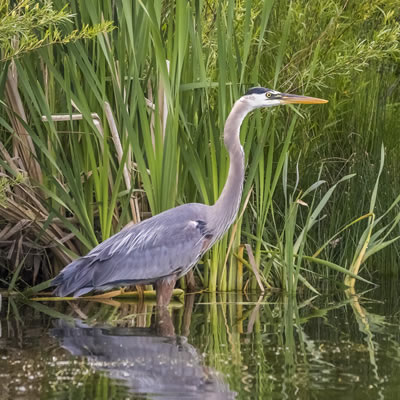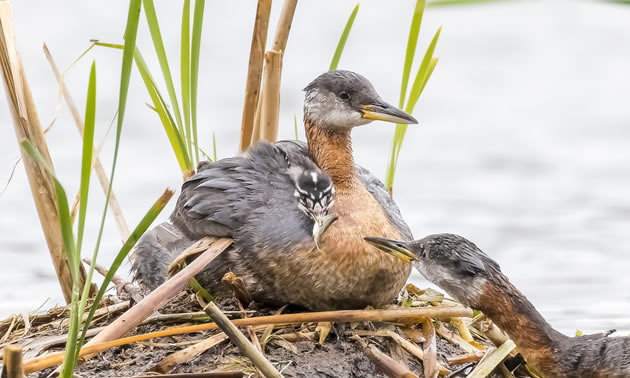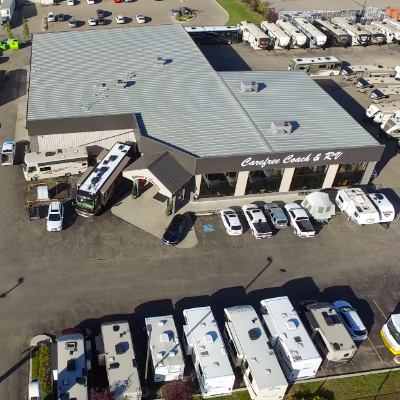Wetlands are wondrous places
Wetlands are one of the best places to observe a tremendous variety of plants, birds and animals

Alberta’s wetlands are wonderful places for recreation—from birding and fishing to boating and photography. That’s because wetlands hold a wildly varying collection of animals.
The change in seasons are reflected in what happens in wetlands and what animals are mostly likely observed. Before the ice is off in spring, waterfowl and songbirds return to rear young. Insects and amphibians lay and hatch eggs. Spotted baby whitetail, mule deer and moose babies arrive. There is plenty to observe and photograph.

Four key wetland destinations in Alberta worth visiting are:
- Big Lake near St. Albert, Lois Hole Centennial Provincial Park is a wondrous place, accessed via the Sturgeon River when paddling or via Ray Gibbons Drive by road or walking trail on the west side of St. Albert. This lake is identified as one of the top 20 habitat areas in Alberta by Alberta Fish and Wildlife. Big Lake is a perfect place to paddle a canoe or kayak.
- Beaverhill Lake is located about 60 kilometers southeast of Edmonton and is defined as one of the most important bird habitat areas in Alberta. Bring your binoculars, long lens for your camera and tripod. Join the Beaverhill Bird Observatory Facebook Page for the latest on what’s going on there.
- Cold Lake and surrounding area is an especially interesting birding area because it is surrounded by boreal forest. The lake straddles the Alberta-Saskatchewan border north of Lloydminster and is worth the three and a half hour drive from Edmonton. The fact that Cold lake is a big and deep lake makes it home to lake trout, and fishing deep over humps in the lake bottom will put you in prime lake trout habitat.
- Buffalo Lake near Stettler is home to Buffalo Lake Nature Club, and a $20 annual family membership will put you in touch with experienced birders and naturalists. Join in the annual species count, butterfly count, owl surveys, and wildflower and breeding bird surveys. Buffalo Lake is two hours from Edmonton and 25 minutes from Stettler.
Wetlands are more than lands that are wet and so much more complex and beneficial to us and our environment than a place to watch dabbling ducks. Ernie Ewaschuk, who has dedicated a lifetime of experience with the Land Stewardship Center of Canada and Ducks Unlimited said, “Wetlands are a biological supermarket.”
Summer warmth brings long days when one can enjoy the outdoors in northern Alberta past 10 p.m. so you can observe those animals that make up that supermarket. Waterfowl develop to the point where they can fly. Beavers renovate lodges and build dams, and muskrats upgrade houses and teach the little ones how to fend for themselves. Top water plants bloom and shorebirds search for dinner. Wetlands are pleasant places to paddle with normally flat calm water, to photograph plants and animals and to just be outdoors.

What makes a wetland?
Ernie Ewaschuk, a biologist who has dedicated a lifetime to the Land Stewardship Center of Canada and Ducks Unlimited, gave the following definition.
Wetlands can:
1. Grow water-loving plants at least part of the year
2. Hold water at least part of the year
3. Contain transitional lands between aquatic and terrestrial land characterized by a riparian ring, growing plants such as willows
Wetlands have myriad functions. Spring flood water collects in low-lying areas that become wetlands and over the course of the seasons. This water is filtered and slowly released back to the watercourse: some evaporates, some is taken up by plants and animals, and some percolates back to replenish groundwater.
“We have to clean the water before we drink it, and wetlands provide this service,” said Ewaschuk.






